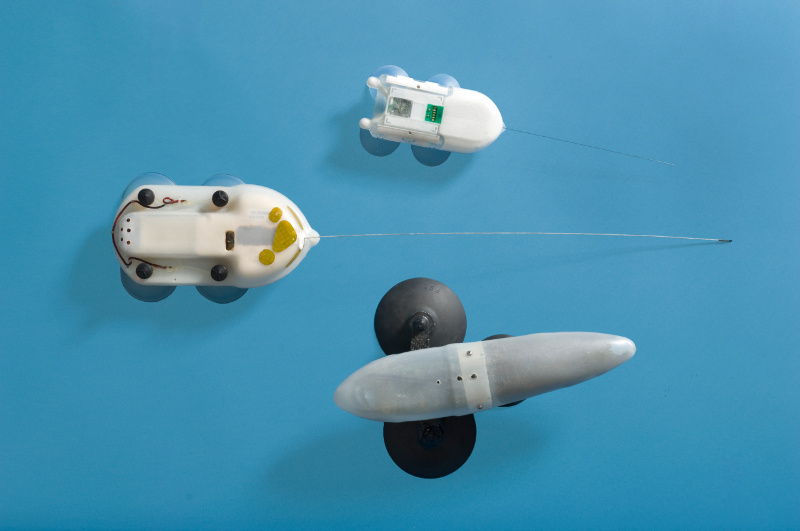What is a DTAG?
DTAGs are miniature sound and movement recording tags designed for use on marine animals. They are resistant to pressure in deep waters, as well as having enough capacity to record and save substantial amount of acoustic and movement data.
They were designed originally for sound response studies on cetaceans but have been applied to a wide range of species to study social interactions, foraging, diving and ecology.
First designed in 1999, there have been three generations of DTAGs with decreasing size and increasing capabilities as electronics have become more dense. DTAG-3 is the latest version of DTAGs. The whole tag has the approximate length of 16 cm, excluding the antenna and 39 cm, including the antenna.

The outer body of a DTAG-3 consists of:
VHF Antenna
Suction cups. Four silicon rubber suction cups are used to attach tags to the animals.
Polyurethane protective hull. All the digital parts of the DTAG, suction cups and antenna, as well as a syntactic foam flotation, are placed in this hull. The upper surface of the hull is covered by a high visibility rubber coating (PLASTIDIP) which helps with visibility of the tag and heat management. There are also 2 reflective strips on each side of the tag to improve the visibility at night.
Release. The active release is controlled by a clock circuit in the DTAG and consists of nickel-chromium wire (which corrodes rapidly in sea water when it becomes anodic) and release tubes (which are sealed by the wire and let the water in the suction cups when they open).
LED function indicator. The function indicator is placed underneath the tag and helps to know how DTAG is functioning when it is connected to a computer.
USB connector

The inner body of DTAG-3, which is placed inside the hull consists of:
Syntactic foam flotation. The float is placed at the rear section of the tag, letting the tag to come to the surface and remain afloat when it is not attached to the whale. The position of the float keeps the VHF antenna above the water surface. VHF radio board is placed in this part.
Hydrophones
Electronic box. This box includes all the electronics and is filled with polyurethane gel.
The DTAG electronic box includes:
Lithium Ion rechargeable battery
Digital Signal Processor (DSP)
Depth (pressure) sensor
Temperature sensor
Audio board
Preamplifier
Anti-alias filter
Analogue-to-digital convertor (ADC)
Movement sensors including accelerometer and magnetometer. For more details see here.
Flash memory (64 GB)
Click on a link below to find out more about different versions of DTAGs: